10 start with R start with R
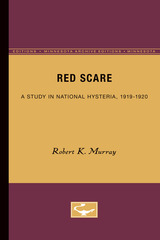
Red Scare was first published in 1955. Minnesota Archive Editions uses digital technology to make long-unavailable books once again accessible, and are published unaltered from the original University of Minnesota Press editions.
Few periods in American history have been so dramatic, so fraught with mystery, or so bristling with fear and hysteria as were the days of the great Red Scare that followed World War I. For sheer excitement, it would be difficult to find a more absorbing tale than the one told here. The famous Palmer raids of that era are still remembered as one of the most fantastic miscarriages of justice ever perpetrated upon the nation. The violent labor strife still makes those who lived through it shudder as they recall the Seattle general strike and Boston police strike, the great coal and steel strikes, and the bomb plots, shootings, and riots that accompanied these conflicts. But, exciting as the story may be, it has far greater significance than merely that of a lively tale. For, just as American was swept by a wave of unreasoning fear and was swayed by sensational propaganda in those days, so are we being tormented by similar tensions in the present climate of the cold war.
The objective analysis of the great Red Scare which Mr. Murray provides should go a long way toward helping us to avert some of the tragic consequences that the nation suffered a generation ago before hysteria and fear had finally run their course. The author traces the roots of the phenomenon, relates the outstanding events of the Scare, and evaluates the significant effects of the hysteria upon subsequent American life.
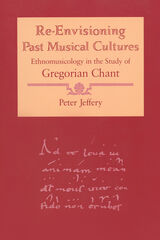
Peter Jeffery offers an innovative new approach for understanding how these melodies were created, memorized, performed, and modified. Drawing on a variety of disciplines, including anthropology and ethnomusicology, he identifies characteristics of Gregorian chant that closely resemble other oral traditions in non-Western cultures and demonstrates ways music historians can take into account the social, cultural, and anthropological contexts of chant's development.
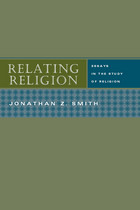
Smith first explains how he was drawn to the study of religion, outlines his own theoretical commitments, and draws the connections between his thinking and his concerns for general education. He then engages several figures and traditions that serve to define his interests within the larger setting of the discipline. The essays that follow consider the role of taxonomy and classification in the study of religion, the construction of difference, and the procedures of generalization and redescription that Smith takes to be key to the comparative enterprise. The final essays deploy features of Smith's most recent work, especially the notion of translation.
Heady, original, and provocative, Relating Religion is certain to be hailed as a landmark in the academic study and critical theory of religion.

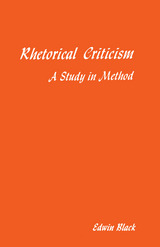
This is a book that, almost singlehandedly, freed scholars from the narrow constraints of a single critical paradigm and created a new era in the study of public discourse. Its original publication in 1965 created a spirited controversy. Here Edwin Black examines the assumptions and principles underlying neo-Aristotelian theory and suggests an alternative approach to criticism, centering around the concept of the "rhetorical transaction." This new edition, containing Black's new introduction, will enable students and scholars to secure a copy of one of the most influential books ever written in the field.
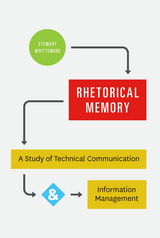
In Rhetorical Memory, Stewart Whittemore demonstrates that strategies we use to manage information—techniques often acquired through trial and error, rarely studied, and generally invisible to us—are as important to our success as the end products of our work. First, he situates information management within the larger field of rhetoric, showing that both are tied to purpose, audience, and situation. He then dives into an engaging and tightly focused workplace study, presenting three cases from a team of technical communicators making use of organizational memory during their everyday work. By examining which techniques succeed and which fail, Whittemore illuminates the challenges faced by technical communicators. He concludes with a number of practical strategies to better organize information, that will help employees, managers, and anyone else suffering from information overload.
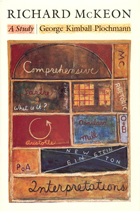

The present work is the only complete translation into English of a Middle Persian text written about 955 A.D. which tells us about the legal problems of Zoroastrians living in Iran under Muslim rule. The form of the book is a series of dogmatic questions and answers which present a kind of compilation of Zoroastrian religious, social, and civil laws. The dialogue comprises some of the rules and institutions which grew out of and were intimately connected with the Zoroastrian religion that dominated Persian life and thought during the Sasanian era and also the period immediately following the advent of Islam.
Nezhat Safa-Isfehani has carefully compared other juridical works in Pahlavi with the present text and has taken into account studies on the present Rivāyat made by other scholars.
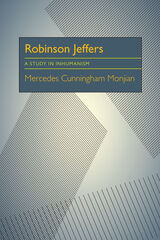
Robinson Jeffers’ name has been so inseparably linked with California that it is difficult to think of his origins being elsewhere. Jeffers was both in 1887 in Pittsburgh, Pennsylvania. His father was a professor at Western Theological Seminary and a scholar of ancient languages who taught his son to read Greek before he started school. In 1902, Jeffers enrolled in the University of Western Pennsylvania, now the University of Pittsburgh, but his family moved to California soon thereafter, and he graduated from Occidental College at the age of eighteen.
Inhumanism was the label Jeffers first used in the preface to The Double Axe and Other Poems to explain the doctrine that permeates all of his poetry. Defining humanism as “a system of thinking in which man, his interests, and development, are made dominant, his addition of the negative prefix was his attempt to subdue human interests and development to something greater, contrasting them against the magnificent beauty and immense worth of the natural world.
In addition to discussing Jeffers’ life and philosophy, Monjian analyzes the form and style of his poetry, calling it “a singular style, slashing its way across the page with violence of image and a free, crashing rhythm.” She ends the book: “Whatever the future holds for this poet, our own age is still awed by the magnificent talent and effort of a burdened mind struggling to free humanity from the shackles of an impoverished self-love, and the myths to which he believes it gave birth.”

READERS
Browse our collection.
PUBLISHERS
See BiblioVault's publisher services.
STUDENT SERVICES
Files for college accessibility offices.
UChicago Accessibility Resources
home | accessibility | search | about | contact us
BiblioVault ® 2001 - 2024
The University of Chicago Press









